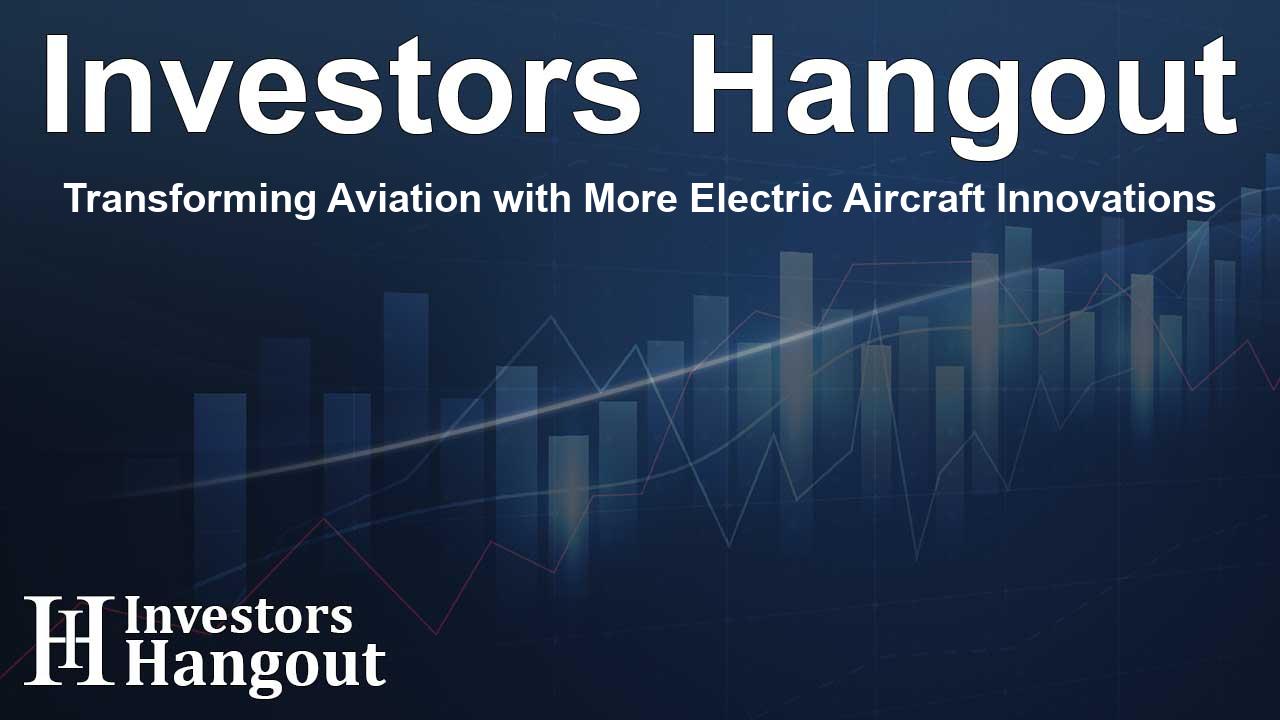Transforming Aviation with More Electric Aircraft Innovations

Exploring the More Electric Aircraft Market Growth
Recent studies reveal an exciting growth trend in the more electric aircraft market. According to new research, this sector is expected to expand significantly, reaching an estimated value of $11.2 billion by 2033. This remarkable growth, which represents a compound annual growth rate (CAGR) of 9.6%, is driven by various advancements and a growing emphasis on sustainability in aviation.
Key Factors Driving Market Expansion
Technological Advancements
At the forefront of this market surge are advancements in electrical systems and components. These innovations enhance aircraft performance and reliability, enabling airlines to optimize their operations. The shift towards electric systems offers numerous benefits, notably improved fuel efficiency compared to traditional hydraulic systems. This transition not only results in substantial cost savings for aircraft operators but also contributes to lower carbon emissions.
Growing Investment in Research and Development
Airline companies and other stakeholders are increasingly investing in research and development focused on electric propulsion technologies. This growing interest stems from the potential for hybrid and all-electric systems to provide environmental benefits, thereby aligning with global sustainability goals.
Market Segmentation Insights
Aircraft Type Segmentation
In terms of aircraft type, the rotary wing segment led the market share in recent evaluations. The versatility of rotary-wing aircraft has spurred their adoption across various industries, including construction and agriculture. The rise of urban air mobility and air taxis is driving this segment's growth, enhancing its market appeal.
Platform Preference
When considering platforms, the commercial aircraft segment represented the largest market share. This can be attributed to significant investments and the increasing requirement for greener options amongst commercial airlines. These companies are actively adopting more electric aircraft technologies, focusing on operational efficiency and reduced fuel consumption.
System Components Dominating the Market
Flight Control Innovations
The flight control and mission management system segment has also shown promising growth, emerging as a dominant force in the more electric aircraft market. These systems are critical for integrating electric and hybrid propulsion technologies, significantly enhancing operational safety and efficiency. The advancement of flight control systems plays a vital role in this trend, driving demand for innovations that reduce both weight and operational costs.
A Regional Perspective on Market Dynamics
North America’s Leading Role
North America is poised to maintain its stronghold in the more electric aircraft market. The region boasts a well-established aerospace industry, which has continuously spearheaded innovations in electric and hybrid aircraft technology. A combination of private and government investments in research and development is accelerating advancements in this field, further solidifying North America's position.
Competitive Landscape
The more electric aircraft sector is characterized by intense competition among key players. Major companies like Honeywell International Inc., RTX Corporation, and General Electric Company are leveraging various strategies, including new product developments and strategic collaborations, to bolster their market presence. This competitive environment is crucial for driving innovation and ensuring the continued expansion of the more electric aircraft industry.
The Future Landscape of More Electric Aircraft
The momentum of the more electric aircraft market reflects a broader shift towards sustainable aviation solutions. As regulatory pressures heighten and consumer demand for environmentally friendly travel options grows, the industry is set for transformational changes. Continued advancements in electric propulsion systems, battery technologies, and lightweight materials will play significant roles in shaping the future of aviation.
Frequently Asked Questions
What is the projected value of the more electric aircraft market by 2033?
The more electric aircraft market is expected to reach an estimated value of $11.2 billion by 2033.
What are the key drivers of growth in the more electric aircraft market?
Key drivers include technological advancements, increased investments in research and development, and a shift towards sustainability in aviation.
Which segment currently holds the largest market share?
The commercial aircraft segment holds the largest market share due to high investments in technology and demand for eco-friendly solutions.
Who are the major players in the more electric aircraft market?
Major players include Honeywell International Inc., RTX Corporation, General Electric Company, and more.
How is North America positioned in the more electric aircraft market?
North America is expected to maintain its dominance due to its established aerospace industry and significant advancements in technology.
About Investors Hangout
Investors Hangout is a leading online stock forum for financial discussion and learning, offering a wide range of free tools and resources. It draws in traders of all levels, who exchange market knowledge, investigate trading tactics, and keep an eye on industry developments in real time. Featuring financial articles, stock message boards, quotes, charts, company profiles, and live news updates. Through cooperative learning and a wealth of informational resources, it helps users from novices creating their first portfolios to experts honing their techniques. Join Investors Hangout today: https://investorshangout.com/
Disclaimer: The content of this article is solely for general informational purposes only; it does not represent legal, financial, or investment advice. Investors Hangout does not offer financial advice; the author is not a licensed financial advisor. Consult a qualified advisor before making any financial or investment decisions based on this article. The author's interpretation of publicly available data shapes the opinions presented here; as a result, they should not be taken as advice to purchase, sell, or hold any securities mentioned or any other investments. The author does not guarantee the accuracy, completeness, or timeliness of any material, providing it "as is." Information and market conditions may change; past performance is not indicative of future outcomes. If any of the material offered here is inaccurate, please contact us for corrections.